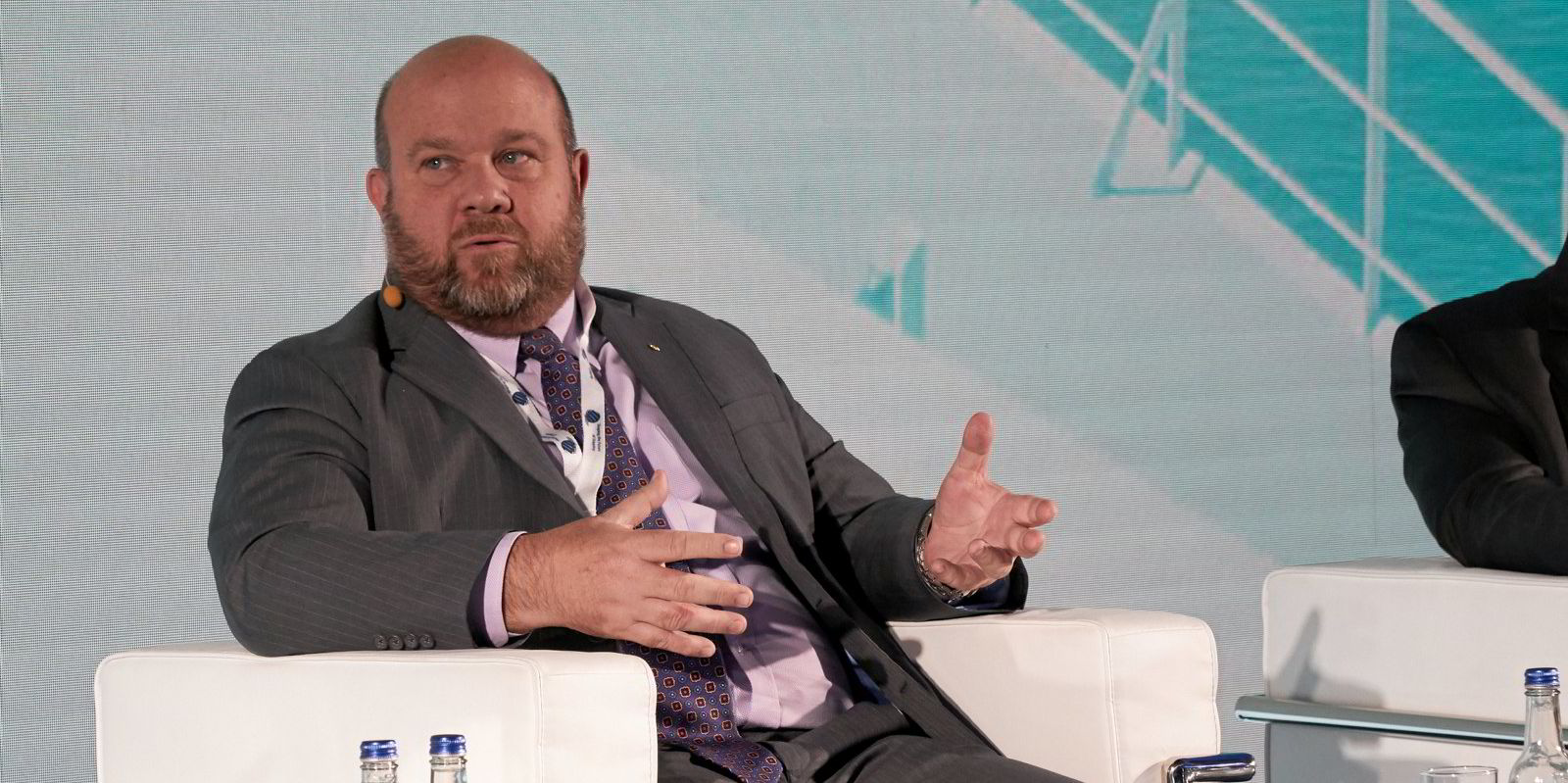Panellists were optimistic shipping would find a way to get to net zero, but admitted 2030’s emissions cut targets might be too ambitious at DNV’s Maritime Forecast to 2050 launch event on Tuesday.
Shipowners have seven years to slash greenhouse gas emissions by 20% in keeping with the IMO’s roadmap to get to net zero by 2050 — a pace too fast for some of those on stage at the DNV event in London.
“I think we all feel that 2030 is tough,” Borealis Maritime chief executive Christoph Toepher said.
Like others on the panel, as part of London International Shipping Week, he said 2050 was doable.
“Human nature is innovative. The doomsday scenarios that some put out, I don’t follow [those],” he said.
Both Cargill Ocean Transportation president Jan Dieleman and Bing Chen, chief executive at Atlas Corp and Seaspan Corp, said progress might not be uneven at times and across sectors. Dieleman said he was not worried if the 2030 goals are met in 2032 or thereabout.
Rio Tinto head of commercial operations Laure Baratgin said her level of optimism would be dictated by how the industry acts in the next several years.
“I could say it all depends on what happens over the next two years,” she said as owners and operators search for emissions-cutting technology and the IMO looks to further clarify its emissions regulations.
Paul Taylor, the head of maritime industries at Societe Generale, said many were surprised that the IMO’s Marine Environment Protection Committee decided to lower the 2050 goal to net zero.
But he noted he was concerned about the 2030 goals.
“The IMO has ... to keep looking at setting new standards for the industry,” he said.
“We have to keep financing the transition.”
Tuesday night’s event highlighted DNV’s take on the coming years in shipping decarbonisation.
It suggests by 2030, shipping would require as much as 40% of all alternative fuels to meet the 20% greenhouse gas reduction goal.
The Norwegian classification society argued owners should look at onboard carbon capture and nuclear propulsion as ways to cut emissions.
It said both were feasible as carbon pricing from the European Union would incentivise carbon-storage projects and that technology typically used on naval ships could be used on commercial vessels.





